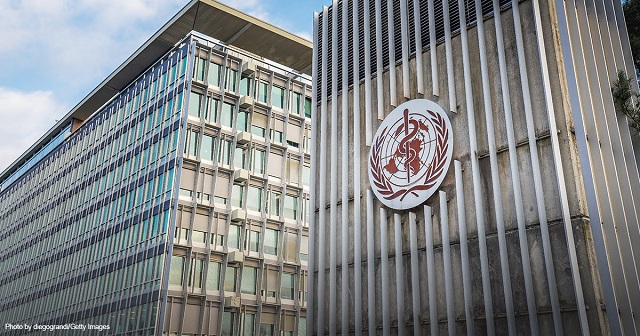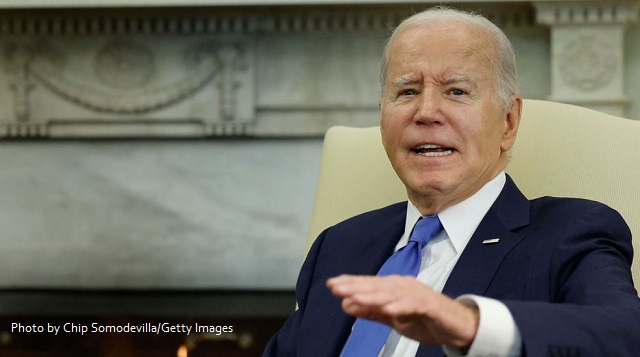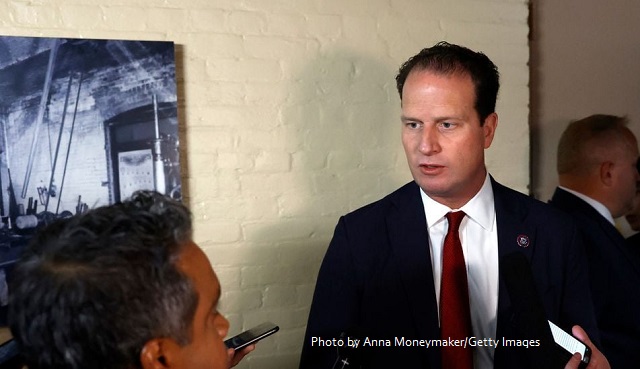Pandemics have a way of falling out of historical memory. President George W. Bush read historian John Barry’s book The Great Influenza: The Story of the Deadliest Plague in History over vacation at his Crawford ranch in 2004; when he got back to Washington, he commissioned a national pandemic preparedness plan, the first in our history, at an eventual cost of over $7 billion. The reason Bush was so affected by this book about the Spanish Flu of 1918–20 is that he never knew anything about it before. Fifty million people died in that pandemic. Up to 4 million died in the Asian flu pandemic of 1957–58, including 116,000 Americans; 4 million people and 100,000 Americans in the Hong Kong flu pandemic of 1968. But these events don’t offer much in the way of lessons or narratives, so they become footnotes.
That is not what will happen to Covid-19. The lockdowns were a major event in world history. Nothing like it has ever happened before, and nothing will be the same after it. With most pandemics, after you have mourned the dead, there is not much more to say about them. There is a lot to say about Covid-19.
But what? Three years later, there is little consensus. When the Great Barrington Declaration was published in October 2020, its proponents predicted that its strategy of letting low-risk individuals carry on with their lives was the one everyone would endorse eventually. That seems to have been borne out. Politicians today apologize for having imposed too many restrictions, not too few. California’s Governor Gavin Newsom told a TV interviewer recently that, if he had known in 2020 what he knows now, “we would have done everything differently,” giving as an example the unnecessary closure of beaches and other outdoor spaces.
Far be it from me to interrupt my enemy when he is admitting defeat, but this is not good enough. Lots of people nowadays are willing to say they should have turned against lockdowns and school closures sooner than they did. But the right time to oppose these measures was from the very beginning.
Covid-19 will not be forgotten. The more embarrassing aspects of our reaction to it might be. Our collective understanding of the pandemic is currently so fluid that we can’t even agree on whether lockdowns were good or bad. Before a false narrative hardens into conventional wisdom, let us get a few things down in the record.
It was hard to know what was going on during the pandemic even for those of us who lived through it. All the usual sources of information we use to make sense of the world were either removed or corrupted. Casual conversations vanished. No more office, no more water cooler. Social media was censored. Usually, Twitter and Facebook are good places to check whether other people are having the same reactions to what’s going on in the world that you are. But censorship kept a lid on many discussions, including some that we now know to be perfectly valid such as the lab leak theory of Covid’s origins, the uselessness of masks, and the failure of vaccines to prevent the spread of the disease.
That left the mainstream news. Headlines gave the impression of a rolling catastrophe. The problem is that this coverage was highly selective. Young Mother, 36, Dies of Covid Hours After Giving Birth. Sad to say, pregnant women die of the flu in normal years, too, just as teenage athletes sometimes had heart problems before the vaccine came along. It may be a pattern, it may not. You can’t base your sense of reality on anecdotes.
There was a bigger problem with the news coverage. Usually, when you read a headline that’s too good to be true, you wait for all the facts to come in. It’s a common three-day news cycle: Dead lowlife’s friends say cops shot him in cold blood; the police department releases body cam footage showing the real story. Defense attorney says his client is being charged for some ridiculous non-crime; court filings show the prosecution’s side. Here is the problem: Hospitals don’t comment on internal matters. Patient privacy laws, plus general bureaucratic risk aversion, prevent it.
The result was that patients’ families could go to the press and say whatever they wanted and journalists ran their stories without checking if they were true. How could they have checked, if the hospitals wouldn’t comment? During the late 2021 surge, I read a story about an elderly man who died after being turned away from dozens of hospitals overwhelmed with Covid patients. Reading further, the source for the story turned out to be someone from my hometown whom I knew a little. A wonderful person, but not someone whose word I would take as gospel under any circumstances. Let us also say it did not surprise me that the article ended with a plea to readers to get vaccinated. In that case, the reporter did call the hospital for comment, but due to privacy laws, they could only confirm that a patient by that name had been in their care and had died.
Enough of these thinly sourced stories turned out to be false to raise questions about the whole genre. In September 2021, local news in Oklahoma reported that a rural hospital had run out of beds and was turning away gunshot victims after being swamped with patients who had overdosed on ivermectin, an antiparasitic drug used in both humans and animals that some doctors were touting as a treatment for Covid. Rolling Stone and Rachel Maddow ran with the story. The whole thing turned out to be fake. The hospital, in a public statement, clarified that the doctor who was the source for the story had not worked there in months and it had no patients currently being treated for ivermectin overdose.
A more grim example from March 2020 was the Arizona woman who claimed her husband died after the two of them decided to drink fish tank cleaner after President Donald Trump promoted a chemical with a similar name, hydroxychloroquine, as a Covid cure. “I saw it sitting on the back shelf and thought, hey, isn’t that the stuff they’re talking about on TV?” his widow told the local news. It turned out the wife was a longtime Democratic donor who had previously been arrested for domestic violence against her husband. Friends said the wife was unhappy in the marriage and doubted whether the deceased, a retired mechanical engineer, would have done something so irrational and impulsive. Nevertheless, journalist Lawrence Wright, who has a Pulitzer Prize, repeated the story uncritically in his book The Plague Year.
A viral video of a nurse claiming she was forced to work in a Covid ward without a protective mask, which was reported as news by CBS, turned out to be the work of a bipolar aspiring Instagram model. The most famous New York Post front page of the early pandemic, “TREATED LIKE TRASH,” featuring a photo of nurses wearing garbage bags, was later found to be staged (their real protective equipment was visible under their Hefty bags) and the hospital denied the alleged equipment shortage.
And these are just the ones we know about. Fortunately for the public, it was in the hospitals’ interest to protect their reputations by correcting stories about shortages and turning patients away, and they were able to correct them because no individual patients were involved. In cases where doctors might have given context to Covid deaths that seemed shocking—yes, he was only 28 but he weighed 300 pounds; yes, she tested positive for Covid but she died of an unrelated condition—they were prevented from doing so by privacy laws. That’s assuming they would have been willing to speak up in the first place, at the cost of being condemned by their peers for giving aid and comfort to pandemic denialists.
I participated in a back-and-forth exchange of open letters in a British magazine, the Catholic Herald, with French pundit Pascal-Emanuel Gobry in March and April 2020, which, looking back on it, makes an interesting time capsule. I questioned whether mortality figures were a useful metric if they did not distinguish between dying from and dying with, and Gobry wrote back: “My instinctive response is a version of Dr. Johnson’s ‘I refute it thus.’ Who knows if people are dying at a higher rate than in past years? Well, have you looked at all the overflowing morgues?” (Emphasis Gobry’s.)
Actually, on the subject of overflowing morgues, some of those stories were not as they first appeared. The most famous example in the United States was the Brooklyn Funeral Home where neighbors called the cops after smelling a foul odor and the police found U-Haul trucks full of decomposing bodies. The owner, Andrew T. Cleckley, later said only fifteen of the bodies retrieved were his. The other forty-eight belonged to other funeral directors to whom he sometimes rented his space, who kept bringing bodies “even after I said ‘Stop!’” He lost his license over this mismanagement, which was unique among funeral homes in the city.
But Gobry was right about one thing. The only way to get the truth about the pandemic was to rely on things you could see with your own eyes. I saw a jerry-rigged hospital go up in the local convention center at a cost of $31 million. When it was dismantled a year later, the mayor admitted it had never served a single patient. NPR ran a story in May 2020 titled “U.S. Field Hospitals Stand Down, Most Without Treating Any COVID-19 Patients.” The whole point of lockdowns, as they were sold to the public, was not to halt the spread of disease but to slow it down to prevent hospitals from being overwhelmed. These empty field hospitals, which the federal government spent over $660 million to build, made a mockery of “flatten the curve.”
Ross Douthat, himself very much a Covid hawk, admitted in a column of September 18, 2021, that he did not know anyone close to him who died in the pandemic. At that time, I didn’t either (there has since been one person). That might be a function of our social circles, although churchgoers do tend to know people across age groups and social classes. Douthat also pointed out that the invisible pandemic could have been brought home by the death of a celebrity in the prime of life, but all the celebrities felled by Covid seemed to be obscure or ancient. The two whose deaths made the most impression on me were John Prine and Herman Cain. Cain was 74. Prine was 73 and battling multiple cancers.
We know that government officials suppressed true information during the pandemic. We know they lied, probably deliberately, as Dr. Anthony Fauci did in his famous reversal on whether masks work. They did this because they had a powerful, all-purpose excuse: Even if what I’m saying isn’t true, at least it will raise awareness of the virus. It will encourage people to take it seriously. In 2009, the headmaster of the Horace Mann School in New York closed his campus prematurely over the swine flu scare before any student cases had been confirmed. “In the end, swine flu or not, we will emerge a healthier school with better health related practices,” he said. That was the mentality during Covid: No such thing as going too far.
They had another reason for lying. They wanted to get rid of Donald Trump.
Dr. Paul Elias Alexander is a Canadian epidemiologist who was brought in to the Department of Health and Human Services to help with the Covid response. Alexander is from Trinidad and has a Caribbean accent, so many people make assumptions about his political leanings and speak more freely than they would if they knew his real views. He reports in his memoir how the workings of the deep state were explained to him:
It shocked me when I was told, “And we in the bureaucracy are dedicated to making every day of his life a living hell. When Americans watch the evening news, all they’ll see will be another day of the country not working under this president. Ungovernable, unmanageable, chaotic, infections going up and up. Americans will want anyone but Trump and we are doing it, for we have all the health agencies like CDC and NIH and FDA working with us. We have Fauci with us, we have Birx with us. How could he win? Our job is to make the pandemic response appear to be a disaster, and we coordinate roughly every day across the different agencies to make it look that way and achieve the goal.”
Whether you believe the details of Alexander’s paraphrase or not, it fits reality. The challenge for the left was to give the impression that the pandemic was being mismanaged without saying exactly what they would do differently. During the vice-presidential debate between Mike Pence and Senator Kamala Harris, the moderator asked Harris exactly that: “What would a Biden administration do in January and February that a Trump administration wouldn’t do? Would you impose new lockdowns for businesses and schools in hotspots? A federal mandate to wear masks?”
Forgive a second long quotation, but the reader must see for himself that she did not answer the question.
They still don’t have a plan. Well, Joe Biden does. And our plan is about what we need to do around a national strategy for contact tracing, for testing, for administration of the vaccine and making sure that it will be free for all. That is the plan that Joe Biden has and that I have, knowing that we have to get a hold of what has been going on and we need to save our country. And Joe Biden is the best leader to do that and frankly, this administration has forfeited their right to reelection, based on this.
Overall, the Democrats gave the impression not so much of an argument as an ultimatum: elect Joe Biden and life can go back to normal.
That does not mean panic about the virus was entirely fake. Many were high on their own supply—in some cases, literally. In February 2023, the Atlantic ran a narrative feature about “Long Covid” by one of its staff writers, in which she listed the medications she needed in order to be able to meet a friend for tea: “15 milligrams of meloxicam (an anti-inflammatory), 600 milligrams of gabapentin (a pain blocker), and 0.5 milligrams of klonopin (a vestibular suppressant). Also, an industrial-strength antidepressant. Also also, two blood-pressure stabilizers.” The author did not consider the possibility that her symptoms might be related to her taking large quantities of what one online commenter called “the benzo di tutti benzos.” She later clarified on Twitter that “the klonopin is just for dizziness.”
Politicians simply did not act as if they believed what they were saying about Covid. The day before D.C.’s Mayor Muriel Bowser reimposed a citywide indoor mask mandate on July 31, 2021, she was photographed at a birthday party for herself with Dave Chappelle and other local celebrities with not a mask in sight. The next day, she was spotted at a wedding dinner, again unmasked. Governor Gavin Newsom was famously photographed at a dinner party at the French Laundry on November 6, 2020, in defiance of his own rules about masking and large indoor gatherings. San Francisco’s Mayor London Breed partying unmasked at a Tony! Toni! Toné! concert, House Speaker Nancy Pelosi unmasked at a hair salon in September 2020 when all beauty parlors in SF were supposed to be closed—over and over, Democratic leaders talked as if Covid were a deadly plague and acted in private as if it were all for show.
President Gerald Ford launched his ill-advised campaign to vaccinate “every man, woman, and child in the United States” against the swine flu on March 24, 1976, one day after his surprise loss to insurgent candidate Ronald Reagan in the North Carolina primary. That is to say, it’s not unprecedented for politicians to use pandemics for their own purposes. In that case, Ford wanted to appear strong and decisive and to rally the nation around him in the face of a crisis, which in the end never materialized. In this case, Democrats made the end of Trump’s first term seem like chaos and allowed their septuagenarian candidate to campaign from his basement.
So were lockdowns worth it? Many people who contemplate this question can’t get past the first logical hurdle: The question is not how many people died but how many would have survived if lockdown policies had been different. In May 2020, it was reported that 42 percent of all Covid deaths had taken place in nursing homes, which house 0.6 percent of the population. Does this mean we could cut the COVID death rate in half if we had focused our protective measures on nursing homes? Certainly, many deaths would have been averted if the governor of New York had not issued an executive order forcing nursing homes to accept Covid-positive residents as long as they were medically stable. But a respiratory virus disproportionately targeting the elderly would not have had a nursing home death rate of zero under any circumstances.
The Australian state of Victoria had the longest and strictest lockdowns anywhere in the world. Drones surveilled downtowns for curfew breakers, and random police stops checked the addresses of motorists to ensure they were not more than five kilometers away from home. The premier who enacted these measures, Daniel Andrews, is the same man who signed up Melbourne to participate in China’s Belt and Road Initiative, a deal later vetoed by Canberra. He genuinely admires the Chinese way of doing things. The data at first seemed to vindicate him: Australia’s overall age-adjusted death rate for 2020 was actually lower than average, with the biggest drop seen in deaths from respiratory diseases including influenza and pneumonia. Locking down the elderly protected them not just from Covid but from everything else, too.
Imagine Australia’s shock, then, when the mortality rate in 2022 was much higher than expected. The number-crunchers at the Australian Bureau of Statistics explained it this way: “We believe some of the higher mortality we saw in 2022 has been influenced by that lower mortality rate in 2020, which was most noticeable in older age groups (85+). This concept is referred to as ‘mortality deficit’ and essentially means that deaths that were expected to happen in 2020 have instead happened in 2021 or 2022.”
The average stay in a nursing home is 24 months. The average age of Covid deaths in Australia, as of July 2021, was 87—four years above the average life expectancy. Perhaps Australia could permanently reduce its nursing home death rate by keeping its lockdown measures, preventing residents from ever having any contact with their families except on a video screen, never touching another person or seeing a human face. But how many people would agree to be admitted under those terms?
On the other side of the ledger, we must count up all the ways our Covid response made the world worse. We managed to avoid a depression despite shutting the economy down for weeks. But our economy is permanently different now. Lockdown orders shuttered small businesses but allowed big chains to remain open, and the results were predictable. In April 2020, according to the website Yelp, more than 175,000 businesses closed, most of them permanently. By contrast, Walmart’s second quarter 2020 earnings report showed a doubling of online sales; Target’s showed a profit increase of 80 percent. The biggest winner of all was Amazon, which in the first quarter of 2021 reported profits up 220 percent compared to the year before.
The federal government’s plan for averting economic disaster involved shoveling a lot of money out the door, and much of it ended up in the hands of the wrong people. We still don’t know how much was lost to fraud during the pandemic, but current estimates put it at over $300 billion (more than the U.S. military spends each year on salaries and retirement benefits). Fraud was so easy that instructions went viral on social media. The federal government made a conscious decision to catch fraud after the fact rather than try to prevent money from being wrongly disbursed in the first place. They underestimated how much there would be to catch. Pandemic fraud was “just so conspicuous,” writes federal auditor Bob Westbrooks in Left Holding the Bag: A Watchdog’s Account of How Washington Failed Its Covid Test. “In 2020, it seemed like every offender was using their newfound wealth to buy a Lamborghini. … Agents and prosecutors had more than their hands full with the ‘Lamborghini cases,’ and federal law enforcement was soon overwhelmed.”
For me, the most lasting harm from lockdowns is knowing what people are capable of. As a pregnant woman, I was shooed off park benches by police when I sat down to catch my breath. A police car parked outside our church at Easter to make sure no one went inside to worship the Lord. I lived in Australia for almost a decade. The people I met there all seemed normal. Yet in September 2020, I watched a video of a 28-year-old pregnant woman in Melbourne being manhandled by arresting officers in front of her children for the crime of creating a Facebook event page for a “freedom day” anti-lockdown protest. (Victoria Police later admitted the officers’ conduct was “disproportionate.”)
Over and over, people here and in Australia yawned off things that should have triggered a political immune response in a healthy republic: arresting people for planning protests; police rummaging through shopping carts to make sure buyers didn’t have any “non-essential” items; neighbors calling the cops on a church service; pastors thrown in jail for gathering with their congregations. My sense of America as a free country was based on beliefs about what people would put up with that turned out to be erroneous. And the people who did all these things still have their jobs.
If I saw through lockdowns sooner than most people did, it wasn’t due to any exceptional powers of perception. I just happen to have experience with someone who struggles with hypochondria. She started with dietary sensitivities and ended up becoming a total shut-in. Vox published an essay in April 2020 by a woman with an anxiety disorder who said she was loving the pandemic because it felt like the rest of the world was finally on the same page: “For the first time, it seems, the rest of the world knows what it’s like to live inside my head.” She knew the same thing I knew, that lockdowns bore a striking resemblance to incipient mental illness.
Next time will be worse. Many of the emergency powers and special funding used during the pandemic were first put in place after September 11 as part of bioterrorism preparedness. When these measures were dusted off during Covid, there was an element of we’ve got it, so we might as well use it. The pandemic inspired many people to pursue a degree in public health, with some MPH programs almost doubling their enrollment. That means there will be an army of pseudo-credentialed people running around the next time a respiratory virus threatens to get out of control. That is why it is so important to get the story straight now. Those people were wrong. No one should put them in charge ever again.














